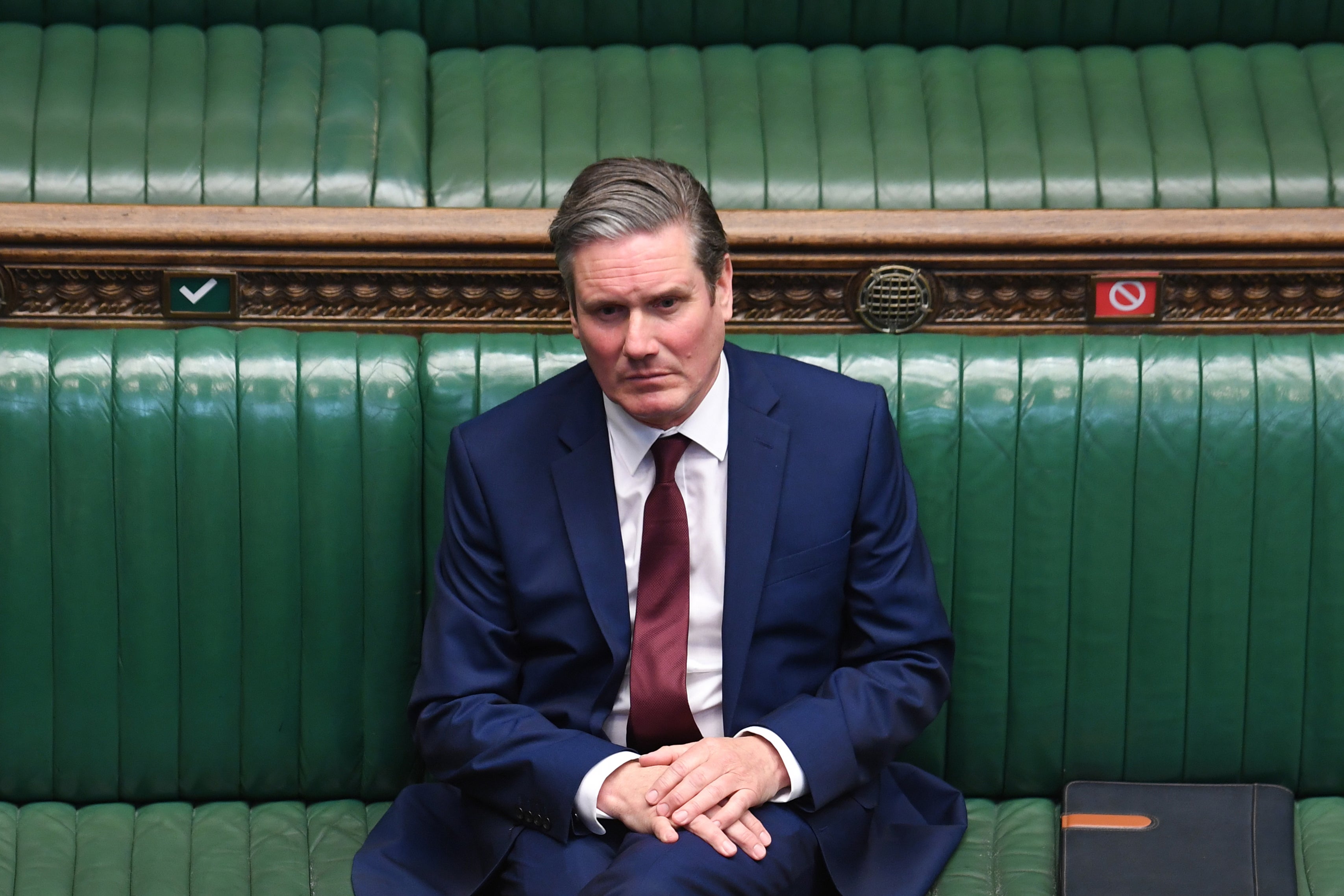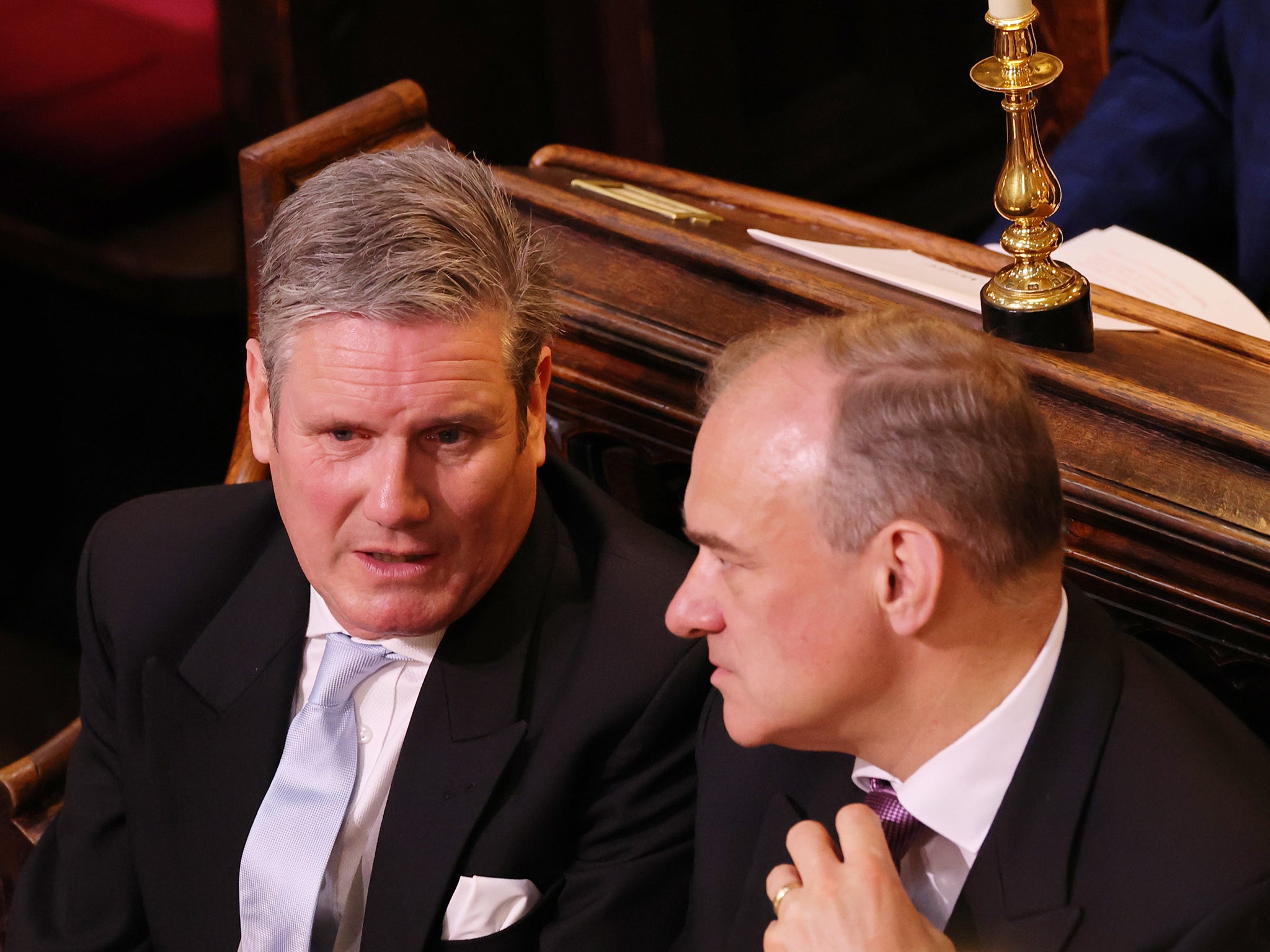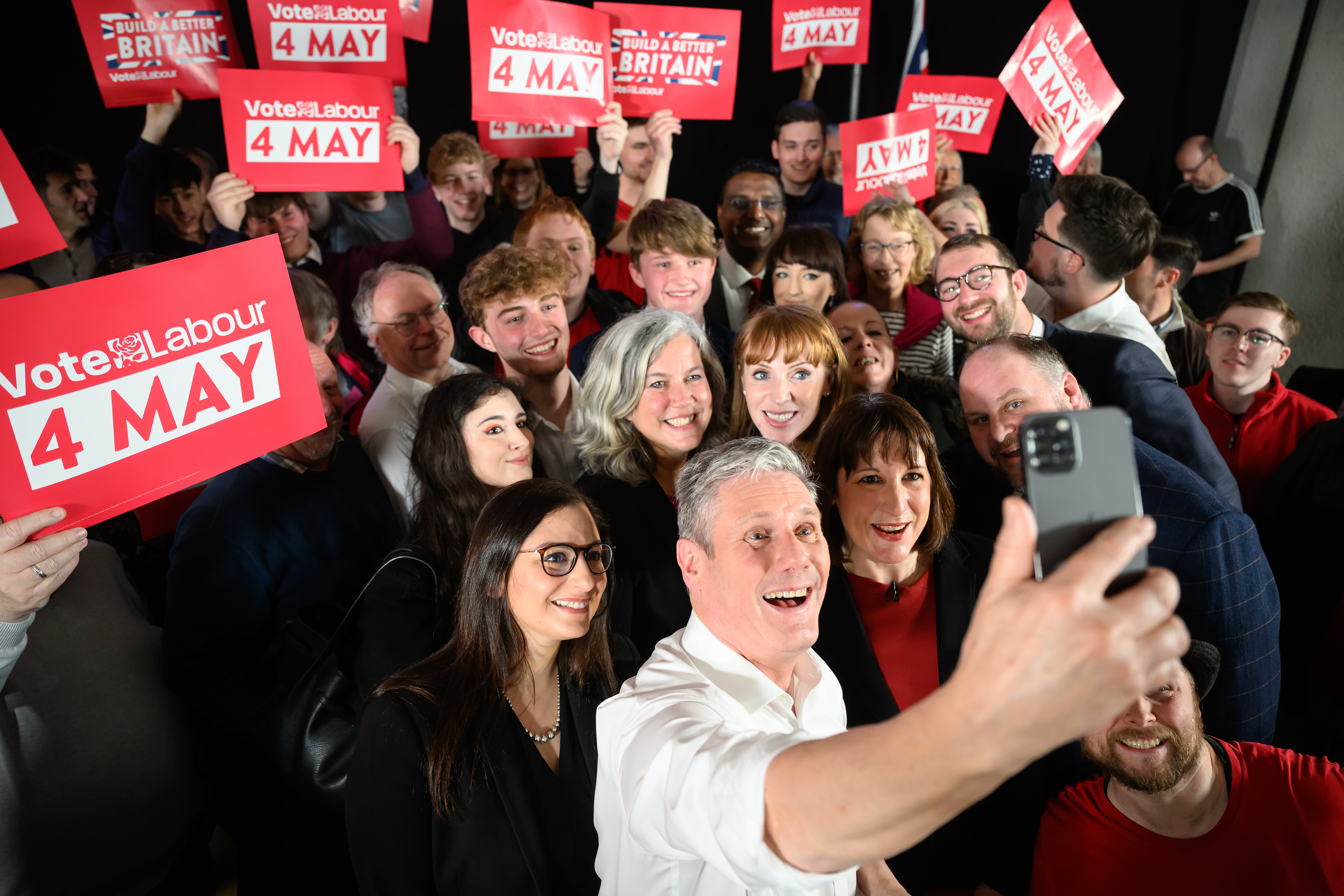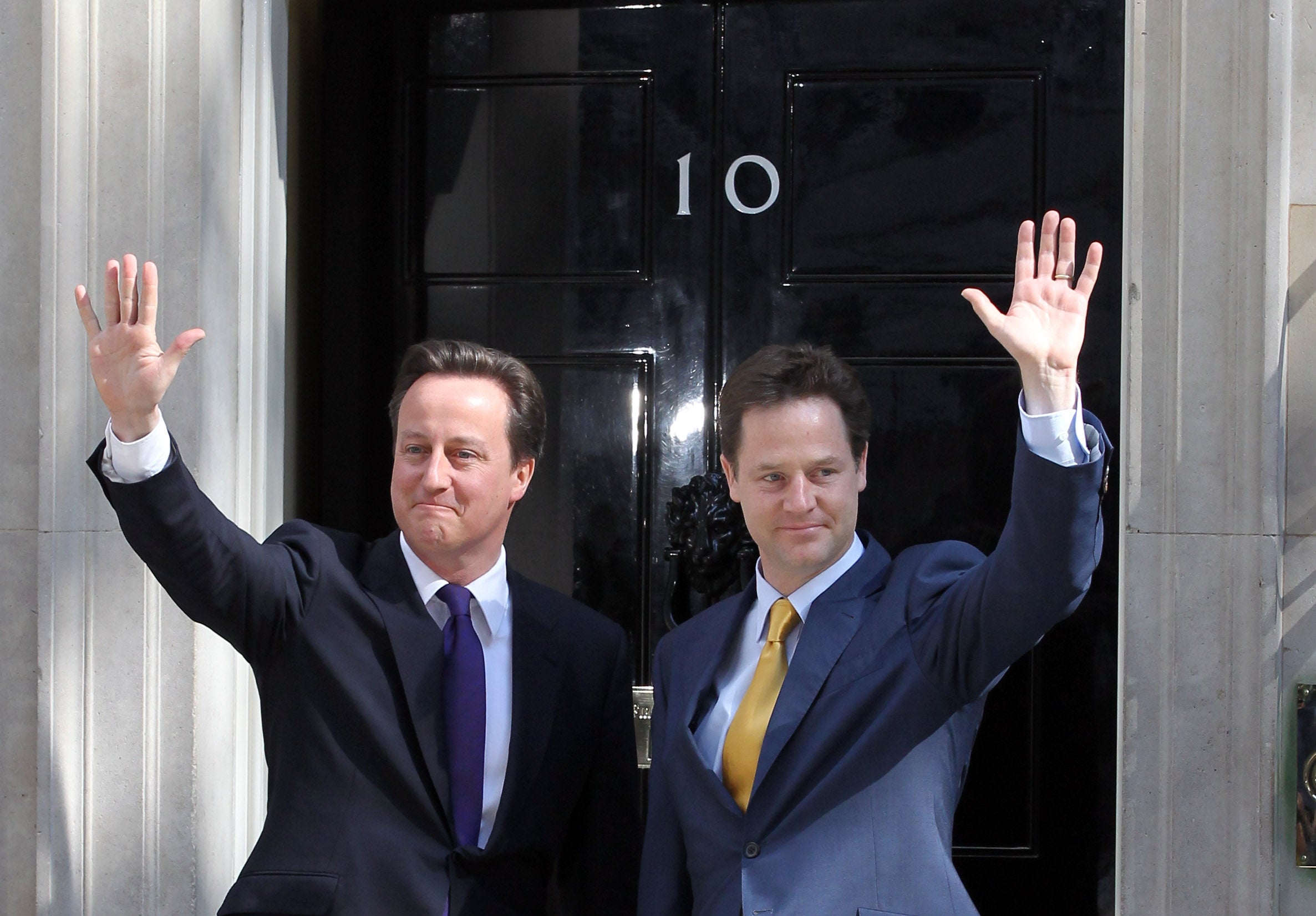Why we need to be talking about a hung parliament
The local elections make it clearer than ever: Labour ought to be preparing to govern without a majority, writes John Rentoul


The most likely outcome of the next election is that Keir Starmer will be prime minister of a minority Labour government. This is a statement of probability, rather than a prediction. Politics is weird and stuff happens: the Conservatives could implode and Labour could sweep to a parliamentary majority; or the economy, the NHS and the small boats could all turn around and happy days for the Tories could be here again.
Or some “unknown unknown” could upset all calculations. But let me set out why, on the information we now have, I think a hung parliament is the most likely result.
Before the local elections, Professor Sir John Curtice said that a Labour lead of 10 points in projected national vote share would be the equivalent of Labour winning a majority in a general election.
Prof Curtice’s estimate was that Labour were nine points ahead on the day. Professor Michael Thrasher’s projection for Sky News was seven points. Therefore, you might conclude that Starmer had fallen just short of the target, and that the local elections suggested that Labour was heading for a general election in which it would emerge as the largest party in a hung parliament.
Except that debate has raged ever since, with Starmer and several number-crunchers claiming that Labour is in fact on course for a majority, because of the power of anti-Tory tactical voting and the changed outlook in Scotland.
These are good arguments, although the strength of tactical voting was exaggerated by the failure of Greens, Liberal Democrats and in some cases Labour to put up candidates against each other, which meant that in many places voters were faced with the choice of a Conservative candidate and one other. This is a kind of forced tactical voting that is less likely to happen in a general election.

There is also likely to be less tactical voting in the general election because it will be fought on new boundaries, so that in some constituencies voters will be less familiar with the tactical situation – that is, they won’t know which party came second to the Conservatives last time.
Thus it was that, four days after the local elections, Prof Curtice arbitrated between the competing claims and in a judgement of Solomon split the difference between the two sides. Writing in The Independent, he decreed that the swing in the local elections was what “on the current constituency boundaries Labour might well need to secure an overall majority of one”. (He meant two, or possibly zero: in an even-numbered House of Commons – there are currently 650 seats – a majority has to be an even number.)
A working arrangement short of a coalition would be possible with the Lib Dems – and has obviously been in Starmer’s mind as he has squirmed under questioning about deals and coalitions since the local elections
But note that he said “on current constituency boundaries”. According to Electoral Calculus, Labour is likely to lose 12 seats on the new boundaries, which will come into effect at some point between July and November this year. This is, incidentally, not a conspiracy by the Tories to fix the system in their favour, unlike their backfired plan for voter ID, which probably put off more Tory voters than anything else. The boundaries have been redrawn by independent commissions in an attempt to make them fairer and to reduce differences in constituency electorates. But it means that Prof Curtice’s final ruling on the meaning of the local elections is that, translated into a general election, Labour would be 12 or 13 seats short of a majority.
However, even this is not the end of the local election prediction saga, in my view. Professor Stephen Fisher of Oxford and Professor Will Jennings of Southampton have separately compared local elections with subsequent general elections since 1974, and observed that the gap between the government party and the opposition almost always moves in the government’s favour at the general election.
The only exception to this was in 2017, when Labour did badly in the local elections in May, but nearly closed the gap in the general election a month later. Assuming that Rishi Sunak is not going to come up with the equivalent of a plan to take people’s homes away from them if they suffer from dementia, I assume that history is more likely to follow the usual pattern.

William Hague thinks so too: “In 2000, as Tory leader, I won the local elections with an 8 per cent lead over Tony Blair’s Labour. You might recall that Blair did not have much difficulty beating me in the general election the following year.” He concluded that the next election is “not in the bag” for Starmer.
So, if the best reading of the local elections is that they would have put Labour on the cusp of a Commons majority in a general election, my assumption is that when it comes to the actual general election, Labour is likely to do less well, putting the middle of the range of possible outcomes firmly in hung parliament territory.
Now things get interesting, because there are so many permutations of hung parliament, and some of them are very different from others.
The first observation to make is that they almost all involve Starmer becoming prime minister. Only if the Conservatives are x seats short of a majority, where x is the number of Democratic Unionist Party MPs after the election (currently eight), would Sunak be likely to stay on as prime minister. All the other parties with MPs in the Commons are opposed to the Tories and would have to allow Starmer to form a government – the only alternative would be propping up a Tory administration.
It is even possible that the DUP could prefer a Labour government, and that Starmer would be ruthless enough to promise it more money for public services in Northern Ireland – I don’t think he would undertake to rewrite the Windsor Framework.
Although in most cases Starmer would become prime minister, there are big differences between a hung parliament in which he has a majority with the Liberal Democrats, and one in which he needs the acquiescence of the Scottish National Party as well.
A working arrangement short of a coalition would be possible with the Lib Dems – and has obviously been in Starmer’s mind as he has squirmed under questioning about deals and coalitions since the local elections. Sir Ed Davey, the Lib Dem leader who was energy secretary in the Tory-led coalition, might like to be a minister again, but his party probably won’t let him. The party was deeply scarred by the experience of 2015, and the party is so democratic – requiring any deal to be put to a vote of a special conference – that the most it will allow is probably a “supply and confidence” deal of the kind that Theresa May negotiated with the DUP in 2017. That would mean the Lib Dems would agree to support the Labour government in votes on budgets (“supply” of money) and votes of confidence, in return for something that probably would not be proportional representation.

Starmer would not need such a deal, because the Lib Dems could hardly switch sides and install a Tory government, or force another general election for which the voters would punish them. But it would make governing easier if he had a formal arrangement. Equally, the Lib Dems could not insist on proportional representation – still less could they demand Brexit be reversed – whatever Andrew Neil, the Daily Mail and the Daily Express say. Davey’s negotiating leverage is weak, given that he has said in advance that he would not support a Tory government. So the Lib Dems would have to accept some trivial concession. Proportional representation in local government, perhaps? I can’t think of anything apart from proportional representation and, ultimately, Brexit, that Labour doesn’t already agree with – although Starmer may have junked more policies by then.
If someone can piece together a majority of MPs for a vote on their King’s speech, it doesn’t matter if they are the leader of the second-largest party
A Labour-Lib Dem pact would be one thing, if the two parties together had a majority. But the SNP would be a different matter. Starmer has ruled out any kind of deal with the SNP emphatically, and would refuse to agree to another referendum on independence. Even if Starmer needed SNP votes – or just abstentions – to form a government, the SNP could not insist on a referendum, for the same reason that the Lib Dems could not insist on changing the voting system. The SNP could not prop up a Tory government, and it would almost certainly be reluctant to force an immediate second election.
But that does not mean that Starmer would find it easy to govern if he needed SNP votes in the Commons. Stephen Flynn, the new leader of the SNP contingent at Westminster, could allow Starmer to form a government and pass a budget, but after that he and his MPs could go on strike. As Philip Cowley, professor of politics at Queen Mary University of London, has pointed out, the SNP could vote to keep Starmer in office, but vote against every programme motion for every bill that the minority Labour government proposed.

Programme motions are essential to the workings of parliament: they lay down a timetable for bills, specifying when the speaker has to end the debate and take a vote. Usually, when a government has a majority, they are uncontentious and are agreed without a division. But if the government has no majority and loses the vote on a programme motion, it loses control of the parliamentary timetable. Debates on bills will continue until the Commons votes that “the question be now put”.
We saw some of that in the wrangling over Brexit in 2018-19. John Major similarly lost control of the timetable over the Maastricht legislation in 1992-93, and in the end had to make the vote on the bill to ratify the treaty an issue of confidence to overcome resistance from Tory Eurosceptic rebels. The last explicitly minority government, James Callaghan’s after the collapse of his pact with the Liberals in 1978, struggled on for six months with no certainty that it would win any vote.
That is why I think Starmer is likely to follow the model of Harold Wilson after the February 1974 election, when he formed a minority government and tried to do as much as he could without legislation – in particular settling the miners’ strike – before holding a second election eight months later.
There are other complications of hung parliaments. It is possible that Starmer would form a government even if the Conservatives were the largest party. That is how parliamentary democracy works: if someone can piece together a majority of MPs for a vote on their King’s speech, it doesn’t matter if they are the leader of the second-largest party. But it hasn’t happened in Britain since 1924, and public opinion may think it doubtful. Labour could, for example, have stayed in government in 2010 if it had ditched Gordon Brown quickly enough and got to the Lib Dems first, but David Cameron led the largest party and so it looked as if he were entitled to have the first go at forming a government.
A Labour government in 2024, 100 years after the first one, may struggle to appear legitimate if the Tories have more seats. So a hung parliament could range from a stable Labour government with Lib Dem support, to a properly hung Commons, in which the Tories are the largest party, just short of a majority with the DUP. In that case, Starmer would have to drive the machine of government with the handbrake on, with the SNP refusing to cooperate and every Northern Irish, Welsh and Green vote having to be negotiated.
It still wouldn’t be a “coalition of chaos” compared with what the Conservatives have delivered since 2016, but you can see why some voters might hesitate before pitching into the unknown.






Join our commenting forum
Join thought-provoking conversations, follow other Independent readers and see their replies
Comments